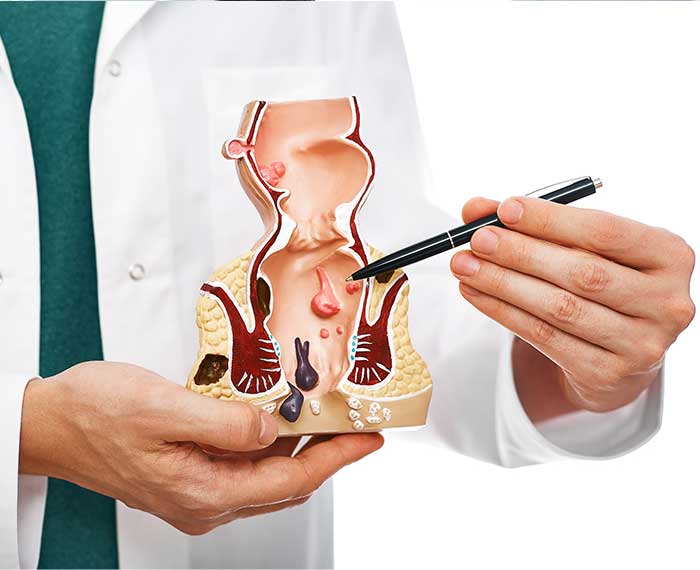Anal Fissure: Causes, Symptoms & Treatment
An anal fissure is an elongated, painful fissure in the lining of the anus. This fissure is typically located in the anal canal and can be traced from the dentate line to the muscular ring to the fibers of the internal anal sphincter. Anal fissure is described as acute if present for less than six weeks or chronic if present for more than six weeks. Once an anal fissure develops, the internal anal sphincter spasms, which leads to further extension of the fissure, restricting blood flow to the area, causing pain and consequently preventing healing.
Anal Fissure Causes
Anal fissures are usually caused by trauma due to excessive stretching of the lining of the anal canal. This happens after passing large or hard stools or diarrhea. Less commonly, this fissure is caused by the insertion of a foreign body, anal intercourse, or injury during a medical examination. Anal stretch marks can also occur in patients who have other medical conditions such as Crohn’s disease, hyperthyroidism, or constipation.
Anal Fissure Symptoms
Anal fissure usually manifests itself with intense symptoms. The main symptom is the appearance of a visible fissure in the skin around the anus and sharp pain during and after bowel movements. The pain may last several minutes to hours after each bowel movement. At the same time, bleeding of a small extent may occur, especially after bowel movements. Some patients also notice itching or irritation of the skin around the anus. Once a fissure develops, these symptoms may occur after every bowel movement.
In some cases, having an anal fissure may lead to a perianal abscess or fistula if the area where the fissure is located becomes infected due to poor hygiene. The symptoms that occur in this case are intense itching, bleeding that may be accompanied by pus discharge, skin irritation around the anus and swelling.
Anal Fissure Diagnosis
For the diagnosis of anal fissure, a thorough clinical examination and taking of the patient’s history is carried out. At the same time, a anoscopy or colonoscopy may be deemed necessary, in order to thoroughly examine the extent of the condition and to identify, if any, hypertrophic papillomas or polyps.
Anal Fissure Treatment
When an anal fissure is in its early stages, conservative treatment is recommended. Pain during bowel movements usually subsides within two days after starting conservative treatment. This includes adding plenty of fiber to your daily diet, such as fruits, vegetables and whole grains, along with drinking plenty of fluids to avoid constipation. It is recommended to avoid drinking alcohol, consuming spicy or salty foods and lifting weights.
If conservative treatment fails, surgical treatment follows. Now the new minimally invasive technique of laser anal fissure treatment has prevailed to treat the condition, which is applied with excellent success rates by General Surgeons in Athens. This technique is bloodless and painless with the use of local anesthesia, while at the same time minimizing the possibility of future recurrences. If deemed necessary, treatment of the fissure is accompanied by surgery with a lateral medial sphincterotomy. In this procedure, a doctor cuts a part of the internal sphincter to relax the spasm that widens the cleft speeding healing.


